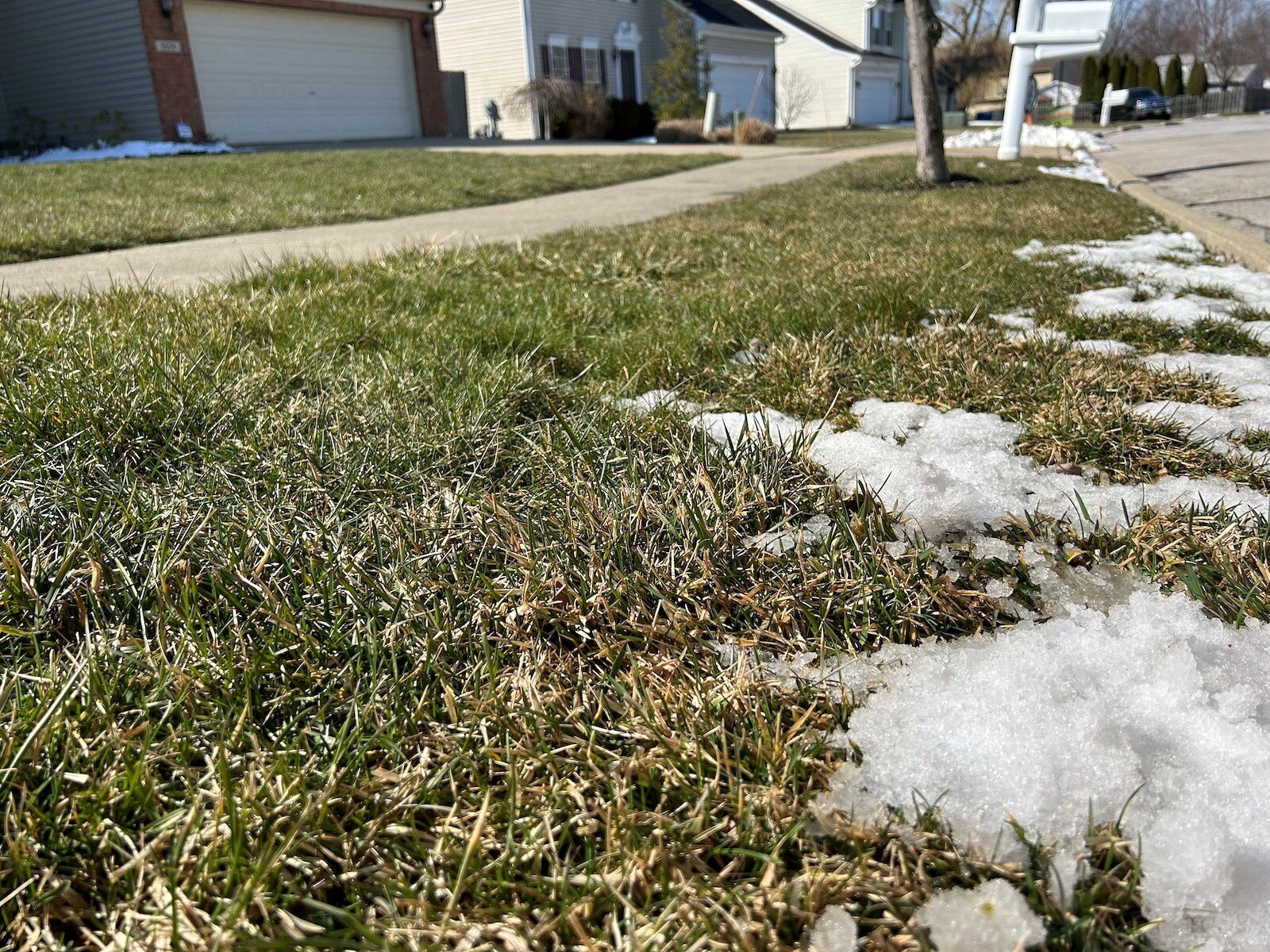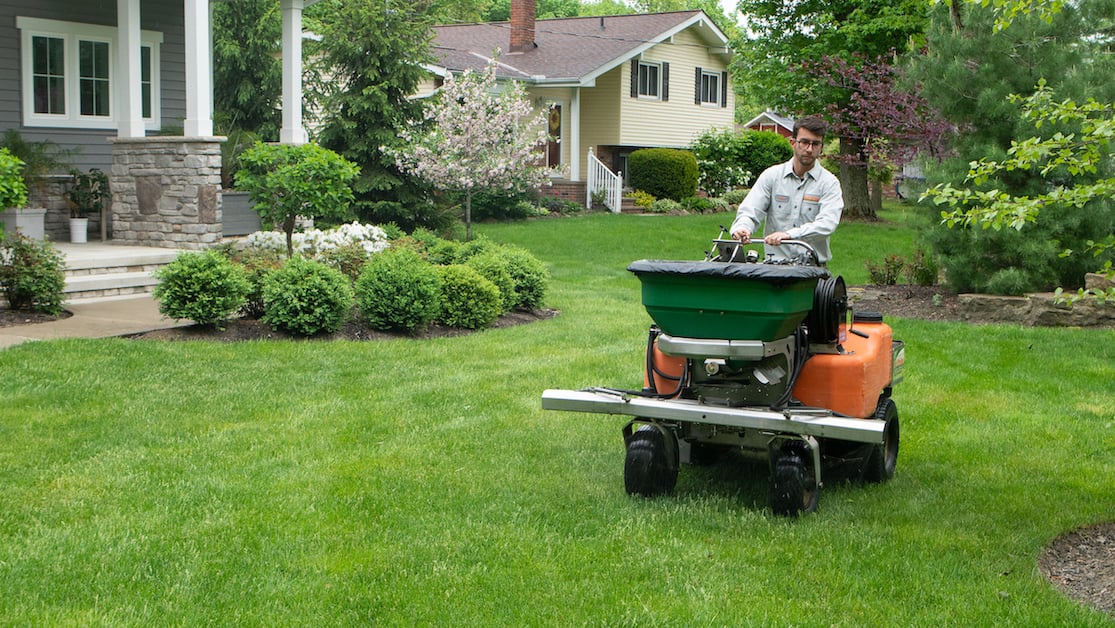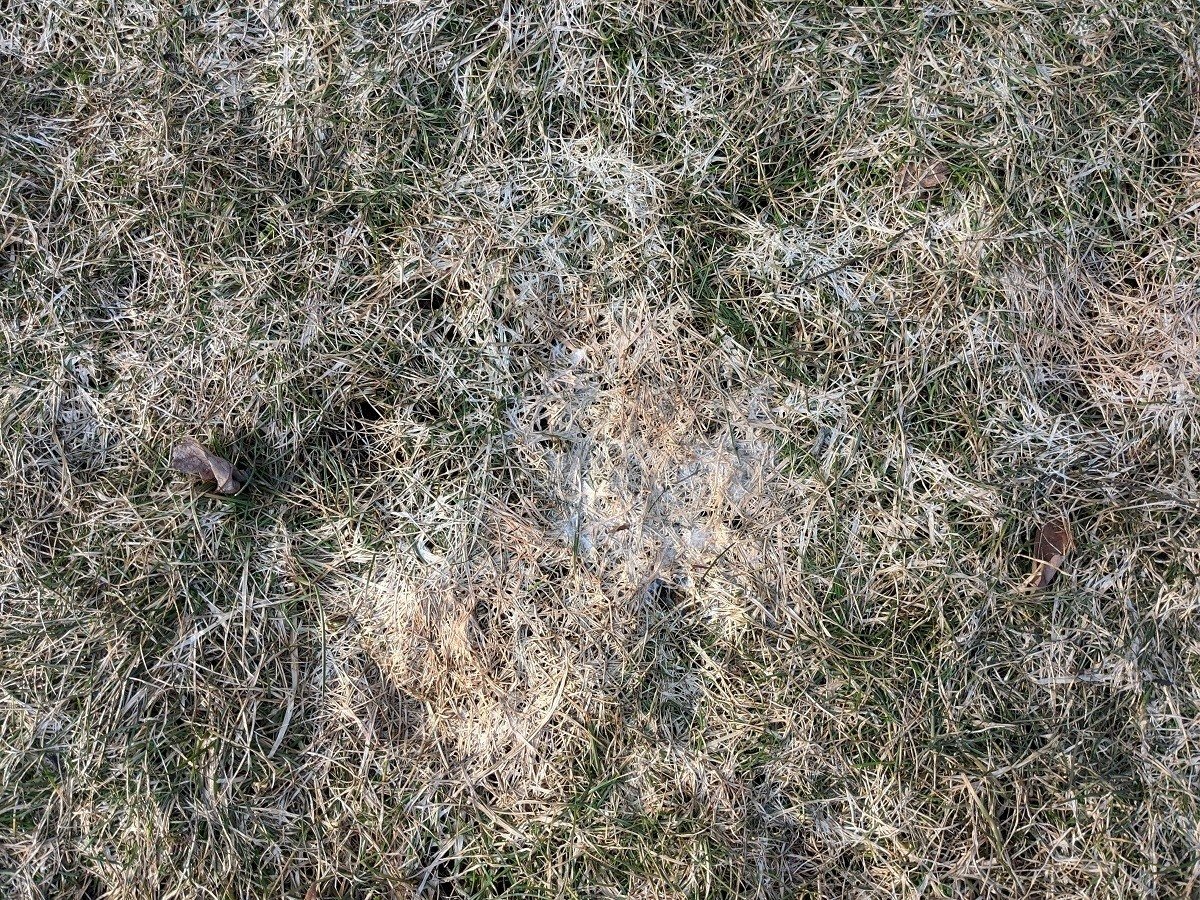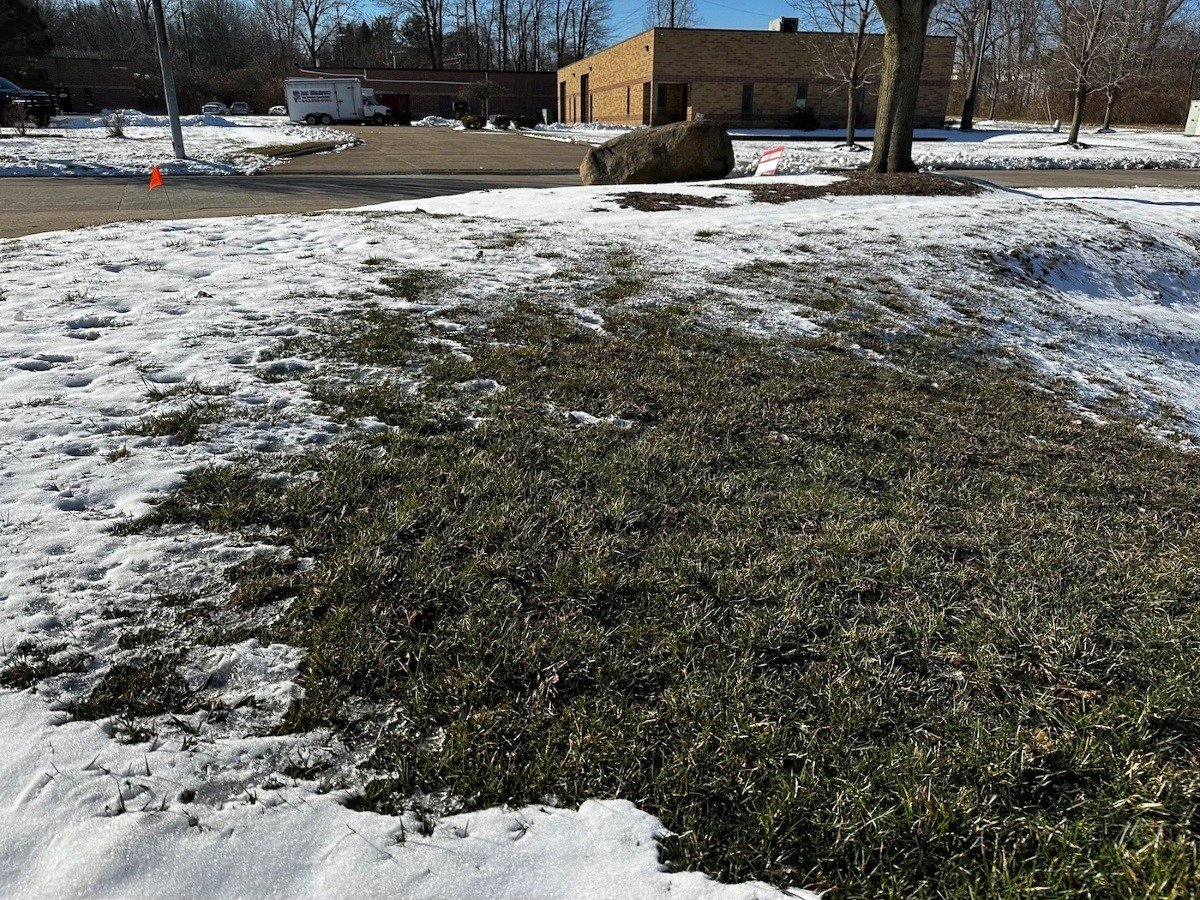
3 Impacts Snow and Ice Can Have on Your Lawn
As a Northeast Ohio homeowner, you know you have to deal with winter’s impact on your lawn.
It’s just a natural part of the climate here. Whether it’s mild or heavy, winter is always coming. And sometimes it can leave its mark on your home lawn.
Caring for a lawn is something you think about only during the spring and summer months, but winter can have quite an impact on how your lawn performs in those key, high-visibility months.
Understanding the impact of snow on your grass can help you better learn how to revive your lawn come springtime so you can have the curb appeal you want.
/front%20of%20house%20with%20green%20lawn%20and%20driveway.jpg?width=5168&height=2912&name=front%20of%20house%20with%20green%20lawn%20and%20driveway.jpg)
We’re here to help you sort it all out. Let’s discuss snow in your yard and ice on your grass, how they impact your lawn, and what you can do about it.
First, Let’s Look at What Happens To Grass in Winter
To begin understanding what snow in your lawn can do, you have to understand the season.
For instance, while you won’t see active growth from your lawn in winter, your grass isn’t dead.
Late fall and winter are known as the dormant period for your grass. This means your lawn is hibernating when soil temperatures drop below 50 degrees Fahrenheit while it waits for spring to return. When your lawn reaches this temperature, it doesn't die; it just stops producing new blades. Then as temperatures warm up again – particularly soil temperatures – it’ll resume new growth.
Also, if you want this great, green, lush lawn in spring, you have to give your lawn attention during the fall and winter, which includes dealing with snow on grass.

3 Impacts of Snow on Grass and Ice on Grass in Northeast Ohio Lawns
You might be wondering how the cold and wet winter weather impacts your lawn. In fact, snow and ice can have a bigger impact on your grass than you think.
After all, you feel the bitter cold on yourself, which is why you’re adding hats and coats and gloves to stay warm.
Here are some of the biggest impacts of snow on grass in Northeast Ohio.
Impact #1: Snow on Grass Can Lead to Snow Mold
In early spring after heavy snowfall melts away, that snow on grass can lead to snow mold.
This fungal disease often appears after snow is melted. It shows up as pink or gray circles in areas where larger snow piles lingered for longer periods, such as near your driveway or sidewalk.

Impact #2: Ice on Grass
While snow is something you can see pile up on your lawn, ice may not be as easy to detect.
Excess water and freezing temperatures can cause ice on grass to develop. When this happens, it’s important to tread lightly on the lawn so you don’t damage its root system. Do this by not walking on a frozen lawn so as not to fracture grass blades.

Impact #3: Salt Damage
When you apply salt in winter to driveways and walkways to help prevent ice from forming, keeping your family safe from slips and falls, the over-application near your lawn can cause some issues.
The salt messes with the soil pH, which can cause lawn discoloration and other issues. This can be worse than ice on your lawn.
To avoid this problem, remember to keep salt to hard surfaces and quickly clean up any spills.
Trust Turf Pride For Lawn Care in Northeast Ohio to Help Combat the Effects of Snow on Grass and Ice on Grass
Don't let the cold winter months destroy your lawn.
Your grass is ready to hibernate in winter, and if you take care of it the rest of the year, you can ensure it has a restful winter full of recovery so snow on grass and ice on grass don’t impact it as much.
For instance, late fall/winter fertilization is essential for your lawn’s root growth. Getting in those fall treatments before winter is what helps your lawn build a better root system so it can be thick and green and healthy come springtime. In Ohio especially with its longer growing season, two fertilization treatments – one in fall (August to September) and one in late fall (October to December) – are important.
And when you make that final mow just before winter, you should cut your lawn to a 2.5 inch height. This helps protect it from getting turf diseases, such as snow mold. If you cut it too short, the cold weather could stress your grass further.
Also, snow on grass isn’t all bad; it does provide some good benefits for your lawn in winter. For instance, it provides enough water to your grass plants at this time of the year.
And by investing in a complete, proactive lawn care program that includes winter lawn care, as well as proper care the rest of the year, you can continue to improve your lawn, keeping it looking its best all year long.
/TurfPrideSpring2022(WebOptimized)-420.jpg?width=5168&height=2912&name=TurfPrideSpring2022(WebOptimized)-420.jpg)
Wondering if your lawn suffered some winter damage? Give Turf Pride a call. We can create a program for your lawn so that your soil gets the nutrients it needs for thick, green grass with fewer weeds and bare spots.
Ready to learn why Turf Pride could be your choice for lawn care in Northeast Ohio. We’re excited to learn more about you and help you have the best lawn on the block. Get started today with a free quote. Together, we can prepare a customized plan that is perfect for you and your lawn.


